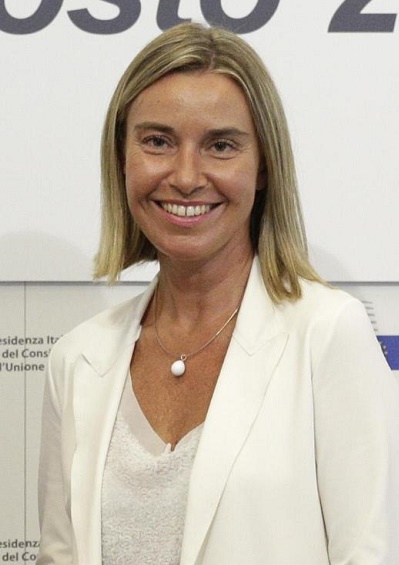Madam Ministers
Which major government currently has the highest percentage of women in its cabinet?

Credit: LANTERIA- Shutterstock.com
Takeaways
- Japan will only restore vibrant economic growth by attracting more of its educated women back into the workforce.
- Led by President Xi Jinping, the Politburo consists of 24 members, only two are women.
- During Obama’s first term, women made up 35% of the cabinet – Clinton’s cabinet was 41% women.
In September 2014, Prime Minister Shinzo Abe attempted to set a powerful example for the Japanese economy by appointing women to powerful positions in his cabinet. The message was clear — Japan will only restore vibrant economic growth by attracting more of its highly educated women back into the workforce.
Unfortunately, less than two months into their tenure, Abe’s appointees had resigned.
We wonder: Which major government currently has the highest percentage of women in its cabinet?
A. China
B. United States
C. Japan
D. European Union
A. China is not correct.
Mao Zedong, the founder of the People’s Republic of China, once said that “women hold up half the sky.” But Mao’s proclamation of gender equality is not evident in China’s leadership council, the Politburo.
Led by President Xi Jinping, the Politburo consists of 24 members, only two of whom are women. That means only 8.3% of Xi’s cabinet — the executives who oversee the implementation of government policy on behalf of the president — is female.
Formally, the Politburo is the leadership apparatus of the Communist Party of China. However, its members simultaneously hold powerful positions in the Chinese central government as well as important regional positions (such as party chiefs of major cities like Shanghai and Guangdong).
The two women on the Politburo are Vice Premier Liu Yandong and Tianjin party chief Sun Chunlan. When the current Politburo took office, in November 2012, it was falsely rumored that Liu could be tapped as the first female member of the influential Standing Committee of the Politburo. The Standing Committee meets weekly and consists of the seven most senior and powerful Politburo members.
B. United States is not correct.
The U.S. Constitution acknowledges that the President “may require the Opinion, in writing, of the principal Officer in each of the executive Departments.” These opinion givers are commonly known as the President’s cabinet.
It took 145 years from the ratification of the Constitution in 1788 for one of those opinion givers to be a woman. In 1933, President Franklin D. Roosevelt appointed Frances Perkins to be Secretary of Labor. Perkins — one of only two of Roosevelt’s cabinet to serve throughout his entire 12-year presidency — was a key official in designing and implementing the New Deal.
Today, President Barack Obama’s cabinet consists of 23 officials, including the secretaries of the 15 departmental agencies. Several other officials — including the Vice President, the President’s chief-of-staff and the ambassador to the UN — also have cabinet-level status.
Only six of those officials are women — or 26%. During Obama’s first term, women made up 35% of the cabinet — including, most prominently, Secretary of State Hillary Clinton. That was higher than the 23% in President George W. Bush’s cabinet, but less than the 41% in President Bill Clinton’s cabinet.
C. Japan is not correct.
After a reshuffling in September 2014, the cabinet of Japanese Prime Minister Shinzo Abe contained five women. That number — representing 28% of Abe’s 18-member cabinet — matched the all-time high number of women in minister-level positions in Japanese history
Unfortunately for Abe, two of the women – Justice Minister Midori Matsushima and Economics Minister Yuko Obuchi – were
forced to resign
After just a month in their positions in the wake of campaign finance scandals. However, both positions have been filled, including Justice Minister, which is now held by Yoko Kawakami, a woman.
Abe became prime minister in December 2012 with a mandate to jolt Japan’s moribund economy back to life. One of his strategies is “womenomics” — inducing more of Japan’s highly educated but underemployed women into the workforce to take the place of the country’s large number of retiring workers.
The percentage of women in managerial positions in Japan’s private sector is just 11%, one of the lowest rates in the world. In the United States, the corresponding figure is 43%, while in France it is 39%.
Women now lead Japan’s justice, internal affairs, economics and trade, and women’s affairs ministries, as well as the national public safety commission.
D. European Union is correct.
In June 2014, the leaders of the European Union’s 28 member states selected Jean-Claude Juncker to be president of the European Commission. The European Commission — which consists of the president and 27 commissioners from the other member states — is responsible for conducting the EU’s day-to-day affairs, proposing legislation to the European Parliament and upholding the EU’s treaties.
When it formally takes office in November, Juncker’s commission will include nine women — or a third of the 27 commissioners. That is the same number as on the outgoing commission of José Manuel Barroso of Spain.
The highest profile woman on the Juncker Commission is Italy’s Federica Mogherini, who will be the EU’s foreign policy chief. Mogherini’s selection was viewed critically by those who want to see the EU adopt a tougher stance toward Russia’s encroachment of Ukraine.
The cabinet of German Chancellor Angela Merkel, Europe’s most prominent female leader, is 31% female (5 of 16). In Britain, David Cameron’s cabinet is 25% female (8 of 32). Half of the 16 ministers in the cabinet of French Prime Minister Manuel Valls are women — and slightly more than half (9 of 17) in the cabinet of Italian Prime Minister Matteo Renzi.



























